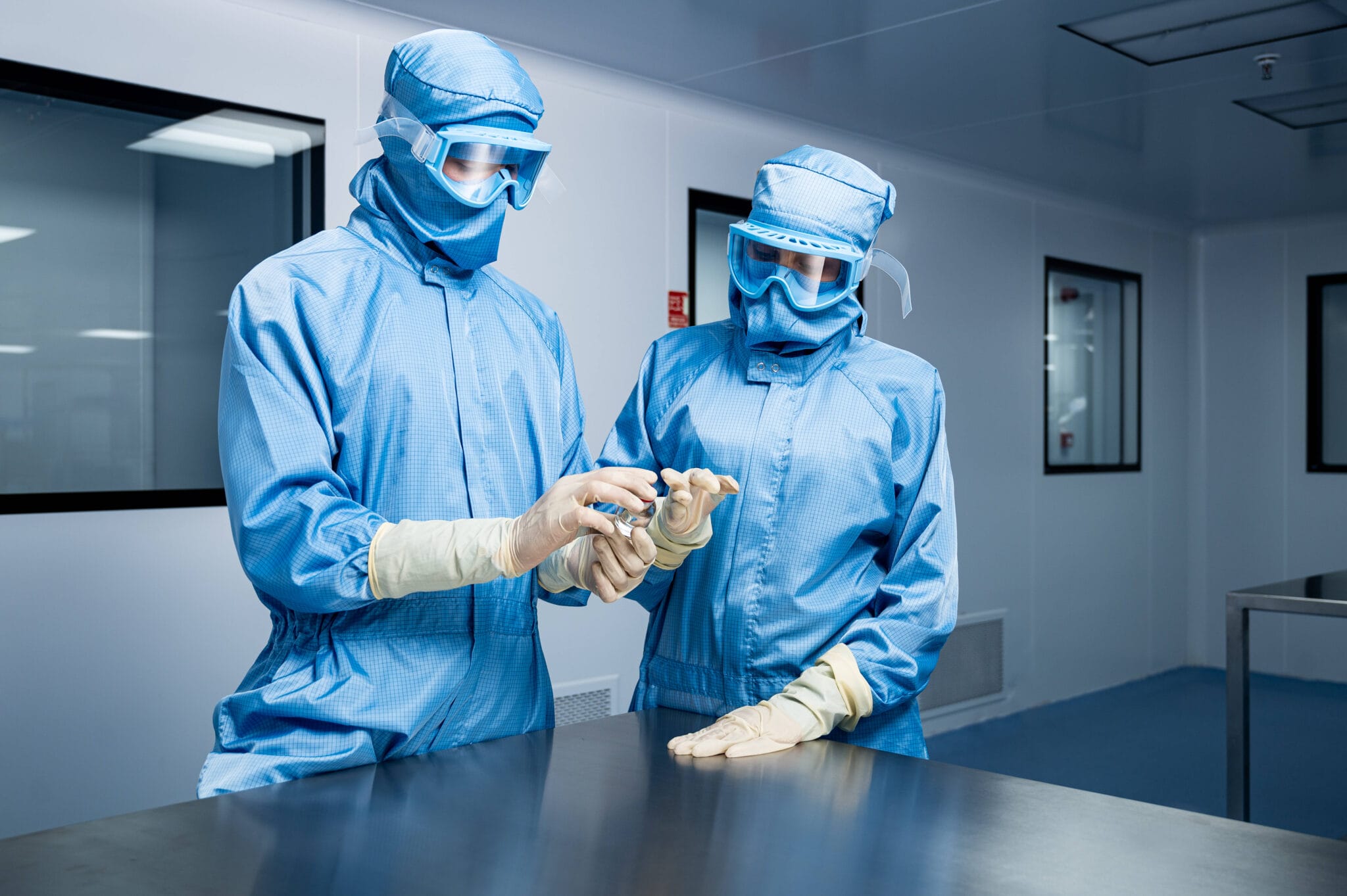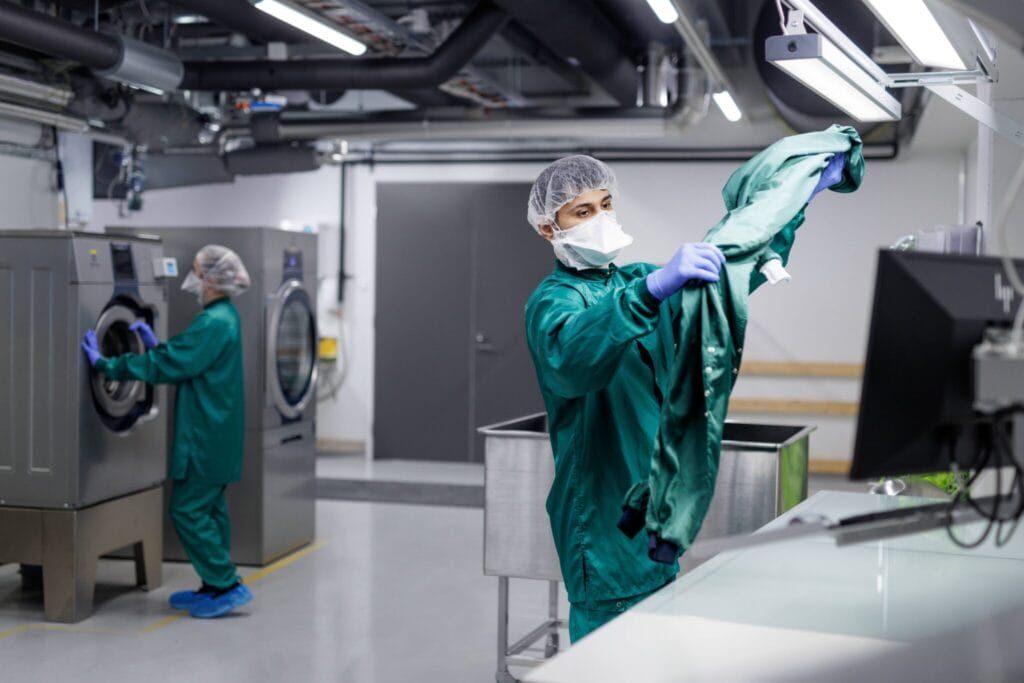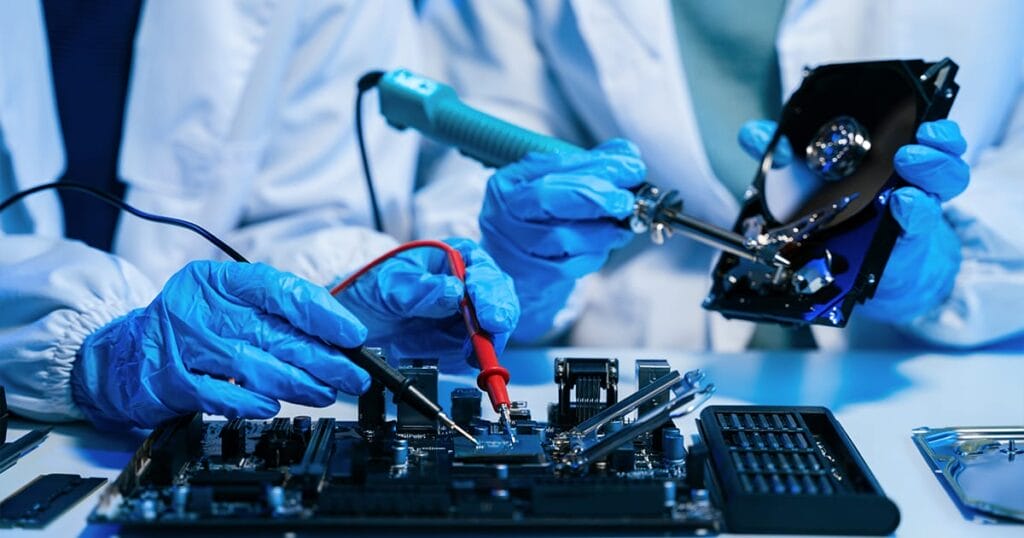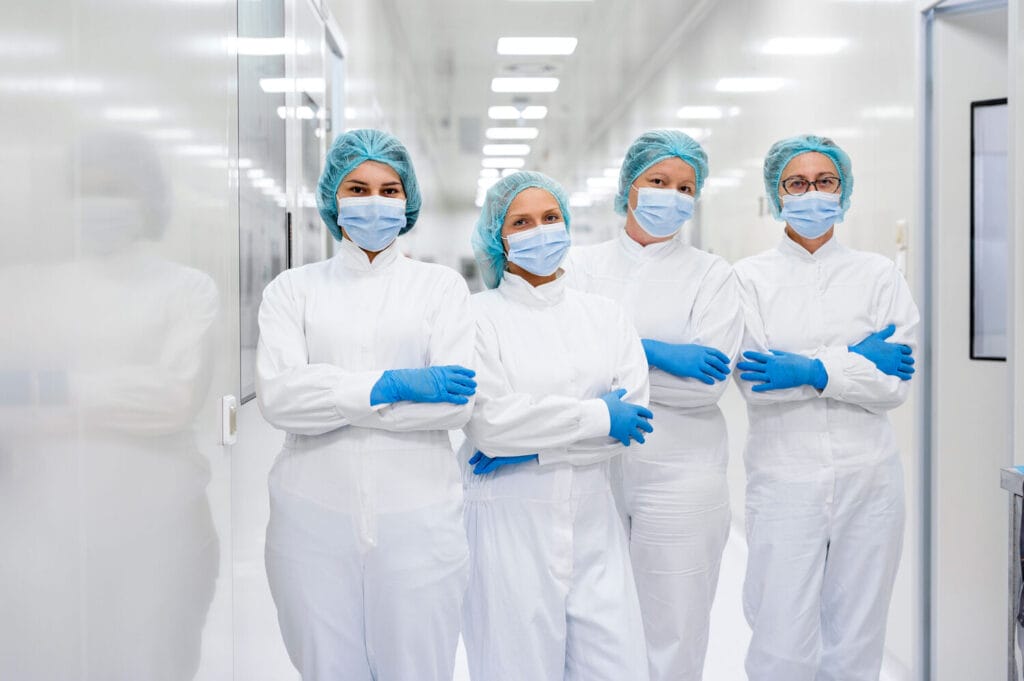
What is Particle Shedding and Particle Monitoring?
In the pristine world of pharmaceutical manufacturing, even the smallest contaminants can have significant consequences. Particle shedding represents one of the most persistent challenges in maintaining cleanroom integrity, potentially compromising product quality and patient safety. For pharmaceutical manufacturers operating under increasingly stringent regulatory requirements, understanding and controlling particle contamination has become a critical operational priority. This comprehensive guide explores the fundamentals of particle shedding and particle monitoring, providing pharmaceutical professionals with essential knowledge to maintain contamination control excellence in their facilities.
What is particle shedding in cleanroom environments?
Particle shedding refers to the release of microscopic particles from surfaces, materials, equipment, or personnel within a controlled environment. In pharmaceutical cleanrooms, particle shedding occurs when tiny fragments of matter become airborne and potentially contaminate sterile products or processes. These particles typically range from sub-micron size to several micrometers and originate from various sources including human skin cells, clothing fibers, equipment components, and production materials.
The phenomenon represents a critical contamination risk because even particles invisible to the naked eye can introduce harmful microorganisms, endotoxins, or foreign matter into pharmaceutical products. In sterile manufacturing environments where injectable medications, vaccines, or sensitive biopharmaceuticals are produced, these contaminants can directly impact product efficacy and patient safety.
Particle shedding is particularly problematic because it occurs continuously and often invisibly. The natural sloughing of human skin cells alone can generate thousands of particles per minute, while synthetic materials in cleanroom environments gradually degrade, releasing microscopic fragments during normal operations. Without proper controls, these particles can easily become suspended in the air, settle on critical surfaces, or find their way into products.
Critical impact of particle contamination:
The consequences of particle contamination in pharmaceutical manufacturing extend far beyond simple quality concerns, potentially affecting every aspect of business operations:
- Product recalls and market withdrawals: Contaminated products that reach the market may require costly recalls, damaging both finances and reputation. Even a single contamination incident can necessitate the destruction of entire production batches worth millions.
- Regulatory non-compliance: Failure to control particulate contamination can result in regulatory observations, warning letters, or even facility shutdowns during inspections by agencies like FDA, MHRA, or CDSCO.
- Production delays: Contamination events typically require extensive investigation, corrective actions, and revalidation before production can resume, creating significant manufacturing delays.
- Increased manufacturing costs: The additional testing, monitoring, and remediation requirements following contamination incidents substantially increase operational expenses.
- Patient safety risks: Most critically, particulate contamination in injectable or implantable products can cause adverse reactions, embolisms, inflammatory responses, or other serious patient harm.
In real-world scenarios, particle contamination directly affects product quality through multiple mechanisms. Particles may act as carriers for microorganisms, introduce chemical contaminants, interfere with analytical testing, or compromise the physical stability of formulations. For sterile products, particles present a particularly severe risk as they may harbor viable microorganisms that could cause patient infections despite terminal sterilization processes.
Common sources of particle shedding:
Understanding the primary sources of contamination is essential for implementing effective control strategies in pharmaceutical cleanrooms:
| Contamination Source | Contribution to Risk | Control Measures |
|---|---|---|
| Personnel | Human operators shed approximately 100,000 skin particles per minute during normal activity | Comprehensive gowning systems, minimized personnel movement, proper training |
| Garments | Poor-quality fabrics can release fibers; improper design allows particle escape | Validated cleanroom-specific textiles, ergonomic design, proper laundering |
| Equipment | Moving parts generate particles through friction; some materials degrade over time | Cleanroom-compatible materials, preventive maintenance, proper cleaning |
| Materials | Packaging, components, and consumables introduce foreign particles | Material qualification, proper transfer procedures, cleanliness verification |
Personnel represent the most significant contamination source in most cleanroom environments. The human body constantly sheds skin cells, hair, and carries microorganisms that can contaminate clean areas. The level of particle generation increases dramatically with movement, making proper gowning and behavior critical control points.
Cleanroom garments themselves can become secondary contamination sources if they’re made from inappropriate materials, poorly designed, or improperly maintained. Traditional fabrics can release significant quantities of fibers during normal wear, while properly designed cleanroom textiles are specifically engineered to minimize particle generation.
Equipment and materials introduced to the cleanroom also contribute substantially to contamination risks. Metal-on-metal contacts in machinery generate particulates through friction, while cardboard, paper, and non-cleanroom compatible plastics can release large quantities of particles when handled.
Understanding comprehensive particle monitoring systems:
Effective particle monitoring forms the backbone of contamination control in pharmaceutical facilities. A comprehensive monitoring system combines several methodologies to provide complete visibility into cleanroom performance:
Monitoring methodologies:
Modern particle monitoring employs a multi-faceted approach:
- Continuous monitoring: Fixed-installation cleanroom particle counters provide real-time data on airborne particle levels, allowing immediate response to contamination events.
- Periodic monitoring: Scheduled sampling at defined locations verifies ongoing compliance with cleanroom classification requirements.
- Surface monitoring: Evaluates particle deposition on critical surfaces through various collection methods.
- Personnel monitoring: Assesses the effectiveness of gowning procedures and behaviors through dedicated testing.
The data collected through these various monitoring activities provides valuable insights into contamination patterns, allowing for targeted interventions and continuous improvement of cleanroom operations.
Establishing baseline measurements:
Successful monitoring programs begin with establishing reliable baseline measurements during the qualification phase. These baselines define normal operating conditions and enable the detection of meaningful deviations. Action limits, typically set at levels below regulatory requirements, trigger investigation and corrective measures before conditions reach non-compliant states.
A properly designed particle monitoring system incorporates both fixed and portable cleanroom particle counters strategically placed to detect contamination at its source or at critical control points. The monitoring frequency and sample locations should be based on a documented risk assessment, with more intensive monitoring in higher-grade areas or around critical processes.
Key particle testing methods explained:
Several standardized testing methods have been developed to evaluate particle shedding and cleanroom performance:
Helmke Drum Test:
The Helmke Drum Test represents the gold standard for evaluating particle generation from cleanroom garments. This test involves placing a garment in a rotating drum while measuring particle counts with a cleanroom particle counter. The test quantifies the particles generated during movement, providing an objective measure of garment cleanliness and performance.
According to IEST-RP-CC003, garments are categorized into different cleanliness categories based on their Helmke Drum Test results, with Category I garments shedding the fewest particles and thus suitable for the most critical applications.
Air sampling techniques:
Air sampling remains the primary method for cleanroom classification and routine monitoring. Various techniques include:
- Particle counting: Using optical particle counters to measure airborne particles of various size ranges.
- Viable air sampling: Collecting microorganisms on growth media to assess bioburden.
- Settle plate testing: Passive collection of particles on exposed media plates.
Each method provides different but complementary information about the cleanroom environment, with modern monitoring systems often integrating multiple sampling technologies.
Surface sampling
Surface sampling evaluates contamination that has settled onto critical surfaces. Common methods include:
- Contact plates: Direct application of growth media to surfaces for microbial testing.
- Swabbing: Collection of particles using sterile swabs for subsequent analysis.
- Tape lift sampling: Removing particles from surfaces using adhesive materials.
These methods help validate the effectiveness of cleaning procedures and identify potential contamination hotspots that might not be detected through air sampling alone.
Regulatory standards for particle control:
Pharmaceutical cleanrooms operate under a complex regulatory framework that establishes minimum requirements for particle control:
EU GMP Annex 1:
The recently revised EU GMP Annex 1 represents the most comprehensive regulatory standard for sterile manufacturing globally. It emphasizes a holistic contamination control strategy and specifically addresses particle monitoring requirements for different cleanroom grades. The standard establishes maximum permitted concentrations of airborne particles and viable microorganisms for each cleanroom classification.
For Indian pharmaceutical manufacturers exporting to European markets, compliance with Annex 1 is mandatory. The regulation specifically requires continuous particle monitoring in Grade A zones with appropriate alert and action limits.
ISO 14644 standards:
The ISO 14644 series provides the foundation for cleanroom classification worldwide. ISO 14644-1 defines cleanroom classes based on maximum allowable particle concentrations, while other parts of the standard address testing, monitoring, and operational aspects.
Indian pharmaceutical facilities typically validate their cleanrooms to ISO 14644 standards, with aseptic processing areas maintained at ISO 5 (equivalent to Class 100) or better conditions. The standard requires periodic reclassification and comprehensive documentation of monitoring data.
IEST-RP-CC003 guidelines:
The Institute of Environmental Sciences and Technology (IEST) provides detailed recommendations for cleanroom garment systems through IEST-RP-CC003. These guidelines establish testing methodologies and performance categories for cleanroom garments, helping manufacturers select appropriate textiles for different applications.
For Indian pharmaceutical manufacturers, adherence to these guidelines helps ensure that garment systems meet international best practices, particularly important for facilities supplying global markets.
Lindström’s validated cleanroom textile solutions:
Effective contamination control requires specialized cleanroom garments designed and maintained to minimize particle shedding. Cleanroom textile solutions address this challenge through multiple approaches:
Specialized fabric selection:
High-performance cleanroom garments utilize tightly woven polyester fabrics with specific features:
- Continuous filament construction that eliminates fiber shedding
- Smooth surfaces that prevent particle accumulation
- Anti-static properties that reduce particle attraction
- Filtration efficiency suitable for the intended cleanroom class
These fabrics undergo rigorous testing to verify their particle shedding characteristics under both static and dynamic conditions, ensuring consistent performance in real-world applications.
Ergonomic design features:
Properly designed cleanroom garments incorporate features that minimize contamination risks:
- Seamless construction or enclosed seams to prevent particle escape
- Full coverage designs that completely contain personnel-generated particles
- Secure closures that maintain garment integrity during movement
- Comfortable fit that reduces unnecessary adjustments in clean areas
These design elements work together to create effective barriers against contamination while maintaining wearer comfort during extended use.
Validated laundering processes:
Specialized laundering processes maintain garment performance throughout multiple use cycles:
- Cleanroom-specific washing procedures that minimize residual contamination
- Controlled drying and packaging in ISO-classified environments
- Regular verification of cleanliness through particle testing
- Documented garment history and performance monitoring
These processes ensure that cleanroom garments maintain their contamination control properties throughout their service life, providing consistent protection for critical operations.
Quality control systems:
Comprehensive quality systems verify garment performance through:
- Routine particle testing using industry-standard methodologies
- Regular inspection for physical integrity and contamination
- Batch certification and documentation of cleaning validation
- Traceability systems that track individual garments throughout their lifecycle
These quality measures provide pharmaceutical manufacturers with documented evidence of compliance with international standards, supporting regulatory submissions and inspections.
Conclusion:
Effective particle shedding control and monitoring represents a cornerstone of pharmaceutical quality systems, directly impacting product safety, regulatory compliance, and operational efficiency. By understanding the sources of contamination, implementing comprehensive monitoring systems, and utilizing appropriate cleanroom garments, manufacturers can minimize contamination risks while optimizing production capabilities.
For pharmaceutical companies navigating increasingly stringent regulatory requirements, investing in validated cleanroom textile solutions offers a proven approach to contamination control. With properly designed garment systems and monitoring programs, manufacturers can maintain the pristine environments needed for today’s advanced pharmaceutical products while preparing for tomorrow’s challenges.
Contact Lindström to reduce particle contamination risks with validated cleanroom garment services that meet your specific requirements and help ensure product quality and regulatory compliance.




